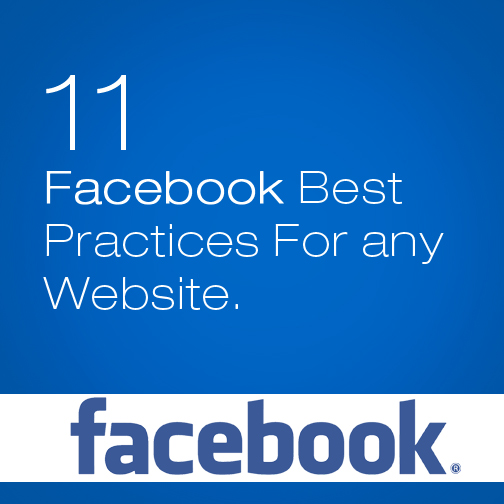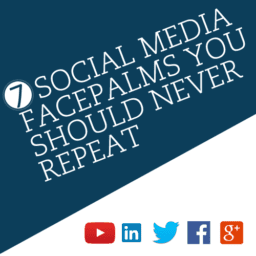
One of the biggest mistakes that nonprofits have made in their social media campaigns is to assume that because someone use Facebook regulary in her personal life, she must also know how to use Facebook professionally. It’s one thing to chat with friends and family on Facebook, and quite another to build and promote a nonprofit brand sucessfully inside the Facebook community. Facebook is the second most visited website in the world and is reshaping the Internet as we know it with every passing day, yet many business owners are still not publishing regularly or some have even yet to get started with a page. More than ever with the launch of Facebook Community Pages and Facebook Places Pages, clearly understanding the Facebook tool set and etiquette is paramount for your nonprofit’s success on Facebook.
1. Find Your Facebook Voice
Ninety percent of the power of a Facebook Page is in the status updates. Most fans don’t hang out on your Facebook Page, browsing through photos, videos, and past posts on your wall. Rather, 90 percent of their experience with your Facebook Page will occur through status updates in their news feed(s). As the admin of your webpage, your number one priority should be to find out what kind of content from your audience are looking for and want to read and engage with. You’ll know through receiving comments and thumbs ups on your status updates, or the lack thereof, whether you are finding your Facebook voice. It may take a few months of trail and error, but just start experimenting. Test different tones of voice. Add some personality. Share links to your Flickr slideshows or YouTube videos. Post comments in response to comment and thumbs ups. You can also ask questions using Facebook Questions. When your Facebook community is engaged and active, then you’ve succeed in finding your Facebook voice; however, this is much easier said than done, so keep experimenting.
2. Always Share a Link, Photo, or Video in Status Updates
Never waste an opportunity to drive traffic from Facebook to your website, blog, YouTube Channel, or somewhere else. Always share a link, photo, or video in a status update. It makes your status updates richer and more visibly appealing because it will attach thumbnails of images to them, and thus you’re much more likely to earn comments and thumbs up. That said, if you share only your own content, you’ll cross that thin line between community building and overmarketing. Mix it up! Share breaking news related to your organization’s mission, trending posts from the blogosphere, popular videos from YouTube, or striking photos from Flickr. Most important, make sure that the link, photo, or video does indeed attach a thumbnail to your status update. Otherwise, people will tend to ignore it.
3. Post No More than One of Two Status Updates per Day
Large national and international nonprofits with well-known and much-loved brands have a different experience on Facebook from that of most small to medium-size companies. They usually have lots of fresh content to share, and their fans are much less likely to “Unlike” their page if they overshare on Facebook. Small to medium-size companies, however, should err on the side of caution. Less is so much more. The law of diminishing returns start to tune you out, or , even worse, they “Hide” you from their news feed or unlike your page altogether. One status update per day is fine, but four to six per week is better. If you absolutely must post two per day, then post one in the morning and the other in the afternoon. That said, it’s also worth noting that an occasional status update posted in the evening or on a Saturday or Sunday tends to produce high levels of engagement.
4. Do Not Automate Content and Sync Facebook with Other Social Networking Sites
There are plenty of tools available that will allow you to post the same content to multiple social networking communities with one click, but don’t be tempted by them. It is very important for you to understand that each online community is important for you to understand that each online community is unique, with its own ebb and flow of content. Five or six tweets ad day is completely acceptable on Twitter, but posting that number of status updates on Facebook is an absolute worst practice. It’s better to work one community correctly than to do many poorly. Authentically posting four to six status updates a week on Facebook and a couple of tweets a day on Twitter isn’t that time-consuming. Your Facebook community wants to know that there is a real human being behind those status updates, not a bot. Remember, community building comes first and marketing second. Ever single status update that you send out should be the result of a couple of minutes of thought, preparation, and personality.
5. Send “Updates” at Least Once or Twice a Month
Admins can send group messages known as updates to those who like their page by going to “Edit Page > Marketing > Send an Update.” These updates then arrive in your fans’ “Messages > Other.” That said, most fans will not read your updates;however, enough will to make it worth the time to send them out once or twice a month. Keep them brief, and always attach a link. In terms of content, engage your fans in updates with success stories and calls to action pitch.
6. Encourage Staff Members and Volunteers to Be Active on Your Page
The truth is that it’s tough for many admins to find their Facebook voice. Even some of the best companies sometimes struggle to earn comments and thumbs up on their status updates, but it’s crucial to keep trying because only status updates with activity get exposure in the “Top News” news feed (the default news feed that users see when they log in to Facebook). No one besides Facebook knows exactly how the “Recent News” algorithm works, but it is certain that not all status updates show up in the news feeds, and the less exposure your company gets in the news feed(s), the less powerful your Facebook Page is going to be.
To help maximize the exposure of your status updates and their news feed potential, definitely encourage staff members and volunteers to post comments and give thumbs ups regularly. A reasonable goal to begin with is to earn at least one comment and three thumbs ups on each status update for every 1,000 fans. Hopefully, you can double those numbers within three months. The activity by staff members and audience is also likely to spark additional comments exposure. Not only that, but the more comments your Facebook Page receives, the faster your page will grow in fans because comments also show up in users’ activity streams.
7. Have More than One Administrator for Your Page
It’s wise to prepare for the worst-case scenario. Sometimes staff members or volunteers will leave your Company abruptly without notice. To prevent them from taking your Facebook Page with them, make sure that your Facebook Page has at least two admins’ to search for and add admin rights. After you have added a new admin, don’t feel bad if you “Unfriend” her-especially if the new admin is your boss. There is nothing improper in terms of etiquette in wanting to separate your Personal and professional lives on Facebook. People need to respect that decision.
8. Use the “Favorites” Functionality
If your Facebook Page is national or international and has many chapters, then favorite the Facebook Pages of your chapters on your Primary Facebook Page so that it can serve as a hub for your Company’s Presence on Facebook. Do you have a
spokesperson? Favorite her page as well. Do you work in partnership with other Websites? Add them to your favorites by either posting on their wall or tagging them in a status update. Using the favorites functionality is a subtle form of partnership building and appreciation. Odds are that they will return the favor and add you to their favorites (or mention you in a status update, a tweet, or somewhere else). It’s a phenomenon that is unique to social media. The more generous you are in sharing some of your social media spotlight with others, the more it eventually comes back to shine on your website. To add a page to your favorites, simply go to the page you want to favorite and on the left side select “Add to My Page’s Favorites.”
9. “Tag” Other Pages to Build Partnerships
Facebook’s tagging functionality enables admins to post status updates on other Facebook Pages’ walls. The first impulse of many admins is to tag in order to self-promote their webpage that is being tag in order to self-promote their nonprofit’s page on other organization’s walls, but in reality tagging better serves the page that is being tagged because the tagger is broadcasting to its fans the page being tagged. The tagging functionality is most beneficial in terms of increasing your nonprofit’s generosity score. Like promoting other pages in your favorites, promoting other pages via tagging also reflects well upon your webpage and helps build partnerships within the Facebook community. Again, this is a phenomenon that is unique to social media. The more you selflessly and generously promote others, the more it eventually comes back to benefit your webpage.
10. Integrate Your Facebook Page into Your Website, E-newsletter, Blog, Print Materials, and “Thank You” Landing Pages and E-mails
Many Websites struggles with increasing their fan base on Facebook. Truth be told, there’s alot of Facebook hype in the blogosphere that seeds the idea that if you build it, they will come. In most cases, that’s just not true, especially for small and medium-size companies. You need to heavily promote your Facebook Page and integrate it into your website, your e-newsletters, your blog, and your print materials for your fan base to grow. During the initial launch of your Facebook Page, you will need to give your Facebook community a jump start by announcing your page in your e-newsletter. Those Websites that do not have a e-newsletters are definitely at a disadvantage because most new fans do come from e-newsletters. After that, to sustain a steady growth of your fan base, you will need to integrate your Facebook Page into your Web and pint promotional materials by adding
- A Facebook icon on your website’s homepage and blog
- A Facebook icon inside every edition of your e-newsletter.
- A Facebook link in your email signature. It helps tremendously if you can implement this organization-wide.
- A Facebook pitch in print promotional materials. such as post cards, newsletters, and annual reports.
- A Facebook pitch on your “Thanks for Your Donation!” landing page and emails.
Except for large, very well-known brands, going viral on Facebook is mostly a myth. You have to promote your page to build your fan base.
11. Integrate your Facebook Page into Your Mobile Campaigns
Facebook has a full-featured mobile website version. If your Website has a mobile version or a smartphone app, make sure to link to the mobile version of your Facebook Page on your mobile website and in your smartphone app(s); otherwise, your status updates will be very difficult to read on mobile browsers. The same is true of group text messages. If you ask your text subscribers to like your page in text messages, definitely link to the mobile version of your Facebook Page.
Source: www.web-design.sg








